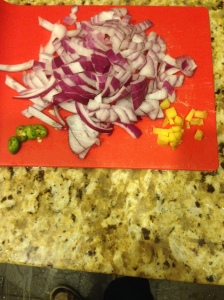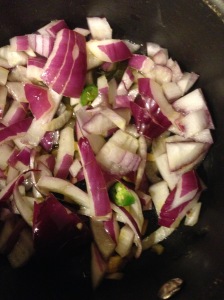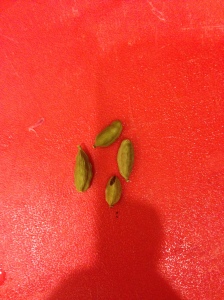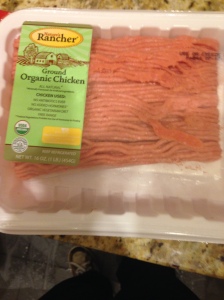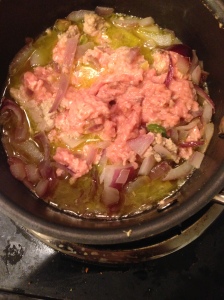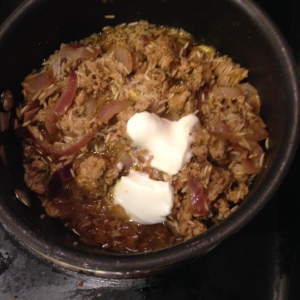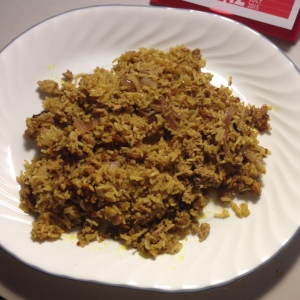Hello everyone! Today I made one of my favorite dishes: a rice dish called Biryani. The specific variation I made is generally inspired by Hyderabadi Biryani, a common dish from Hyderabad in south-central India. Although Biryani is eaten by everyone in South Asia (India, Pakistan, etc.) today, it originated in particular from Muslim communities in South Asia. The cities of Hyderabad and Lucknow in India are particularly famous for their Indo-Islamic recipes. Traditional Biryani, made from goat or mutton, is especially popular during Ramadan. There are now many, many variations of this dish all over the Subcontinent region including vegetarian, chicken, and seafood ones.
First, prepare your basic vegetables, those which give the biryani their extra flavor and character. Since I’m making a meat biryani, I’m not going heavy on vegetables, and avoiding bulky ones like tomatoes and potatoes. You can can these if you want, though I recommend saving those for potato biryani. I used onions, green chilies, and ginger.
Put these in the pot to fry in oil on high.
Also, add whatever spices you want, if you have any. Here, I added some cardamom for flavor. Cinnamon, peppercorn, cloves, and cumin seeds are also common.
Now, it is time to add the meat to the mix. Make sure you add a cut that’s flavorful and won’t get too dry. So if you’re using chicken, avoid breast. Normally, a nice chunk of meat with bone is a good add since the marrow adds extra flavor to the biryani. Some of the best biryani has the bone of a goat/lamb or chicken drumstick. However, today I wanted to make something simpler/easier, so I used ground chicken thigh. Technically, I made keema biryani (ground meat biryani).
Add and stir.
Now add rice. Biryani won’t be biryani without rice. Make sure you use white basmati rice (basmati rice is a long-grained rice from India or Pakistani, do not use East Asian style rice). Also add some yogurt as a thickener if you want.
Now, here’s the most important step. The Biryani mix! This gives the biryani its distinct flavor as biryani, as opposed to rice with vegetables. You can of course make your own biryani mix, but I used a prepared one that gets the taste right. Add the mix to the pot.
Now, all that’s left to do is to cook it as you would with any dish with rice. Fill the pot with water, but not too much. The dish should be moist but dry when finished. Cover and cook. Remove from stove when the water has been completely absorbed by the biryani. Serve with egg and yogurt, as is traditional, if you wish! Enjoy!


